Abstract
Growth medium components and cultivation conditions for the extremely thermophilic bacterium Thermotoga neapolitana were optimized. A defined marine salts medium was formulated. Trace amounts of iron stimulated growth of T. neapolitana, while zinc inhibited growth at concentrations exceeding 11.1 μM. Other trace metals had no effect on its growth. Of the vitamins tested, only biotin was required for optimal growth. A defined mineral medium containing 5 g of carbohydrates per liter as the carbon source and 0.5 g of cysteine per liter as the sulfur source and reductant supported growth. Growth was stimulated by inclusion of vitamin-free Casamino Acids. Elemental sulfur, cystine, and dimethyl disulfide in the growth medium enhanced growth. Elemental sulfur and cystine relieved growth inhibition by hydrogen. T. neapolitana formed colonies in 2 days on plates of complex medium solidified with gellan gum and in 4 days on defined medium. The efficiency of plating was determined when growing cultures were sampled both aerobically and anaerobically and plated under aerobic and anaerobic conditions. Mean plating efficiencies were improved by sampling the growing cultures under strictly anaerobic conditions. Little or no improvement was obtained by inoculating plates inside an anaerobic chamber. Plating efficiencies of approximately 80% were obtained. Polycarbonate jars with aluminum lids withstood repeated incubation at 77°C without significant deterioration of the anaerobic seal and provided the most consistent results.
Full text
PDF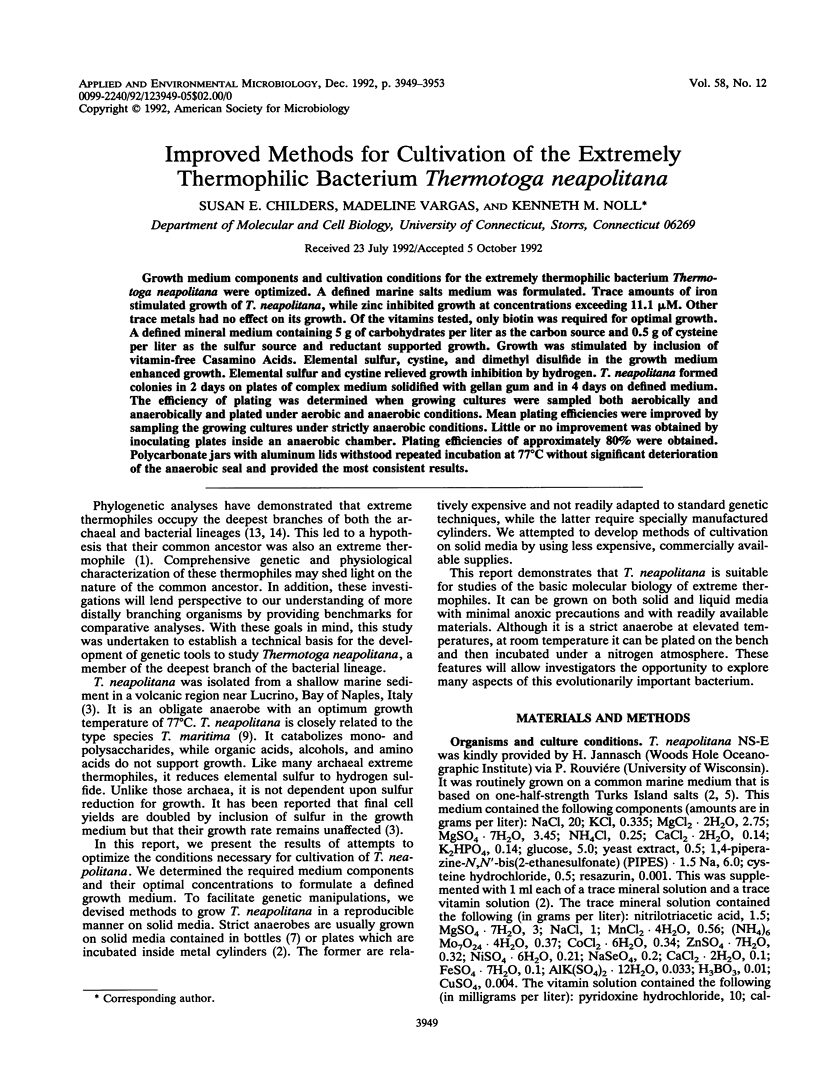
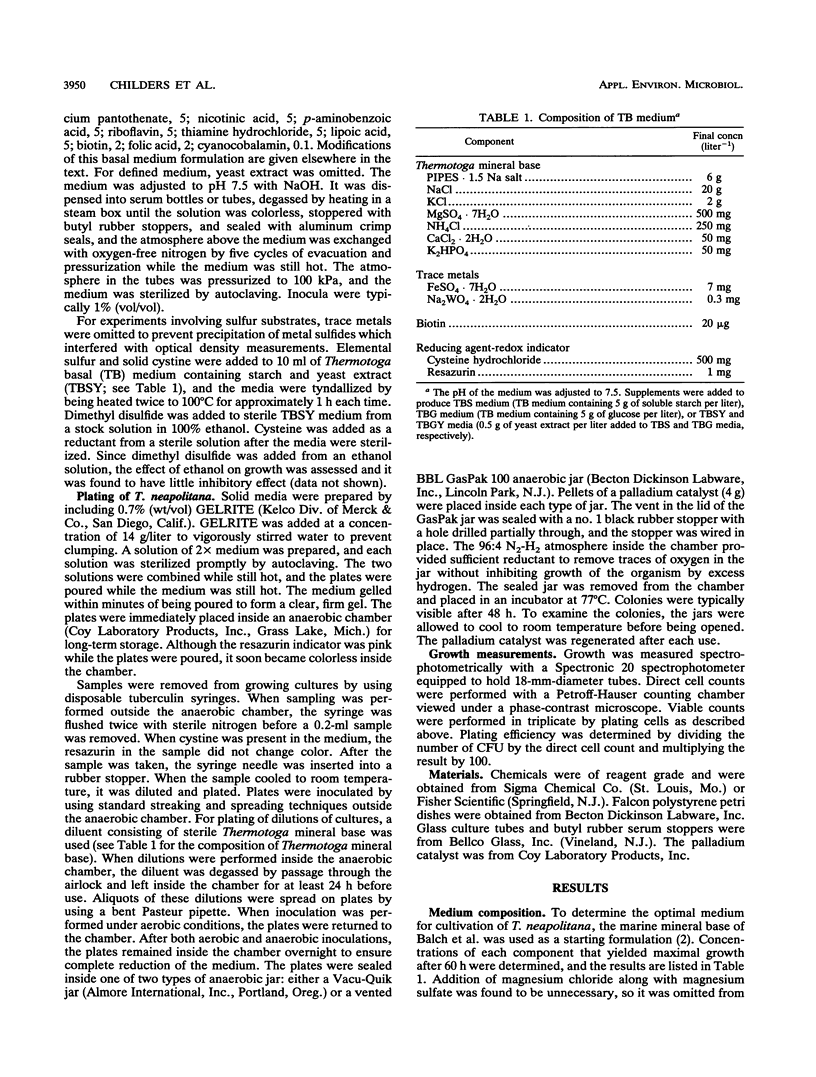
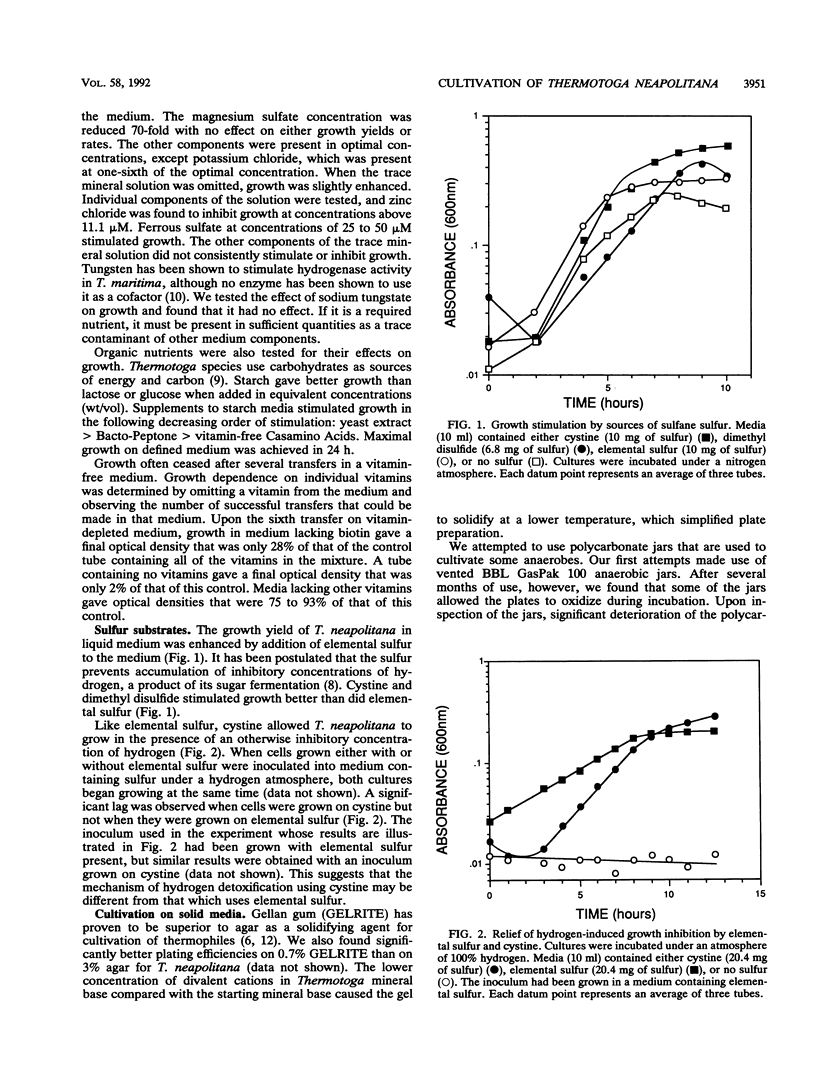
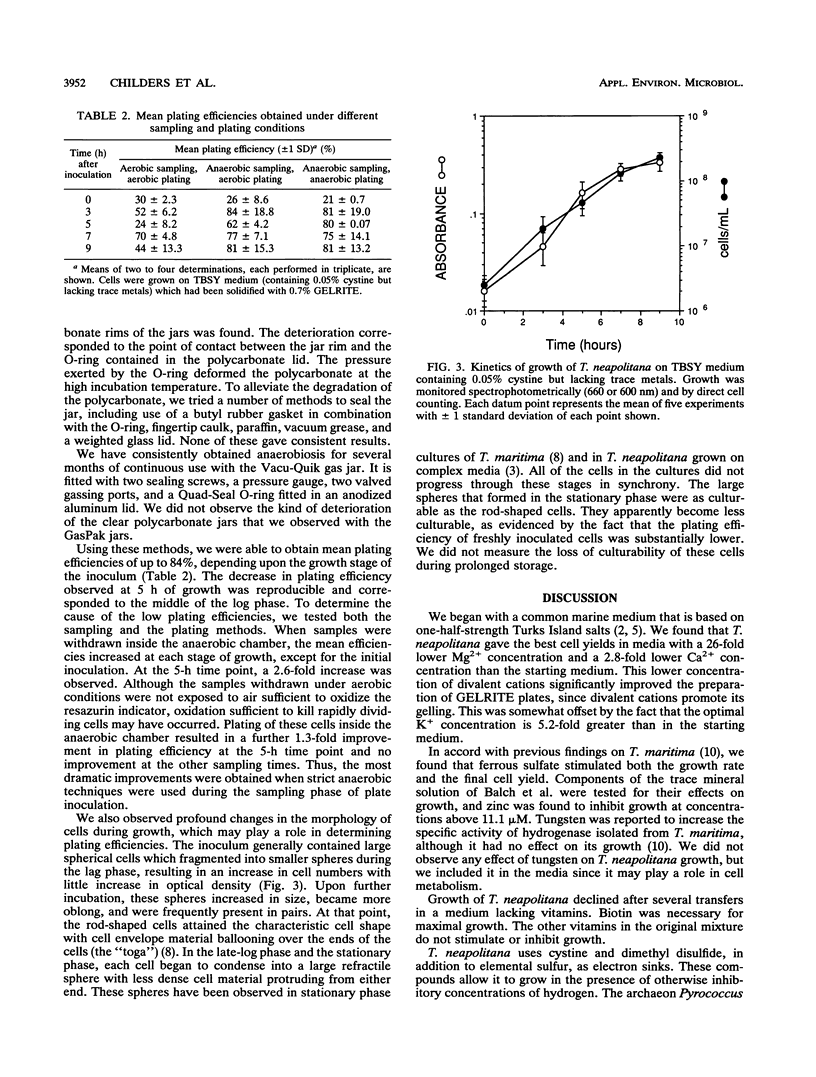
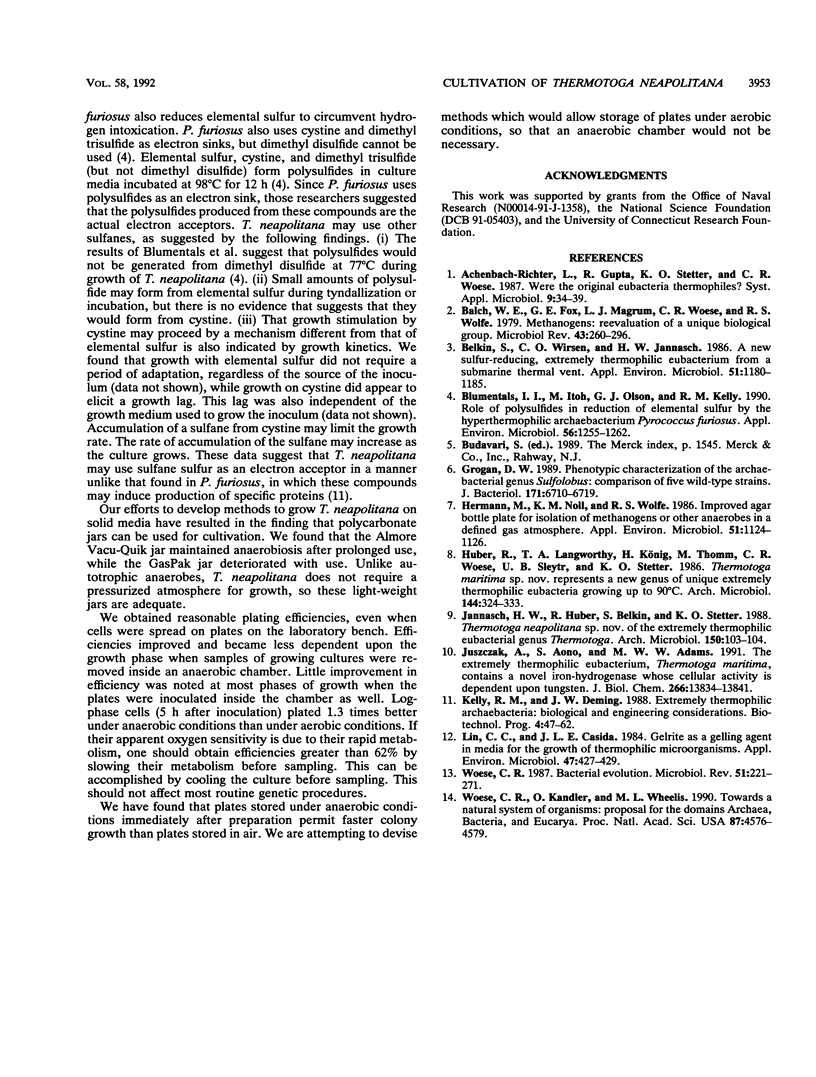
Selected References
These references are in PubMed. This may not be the complete list of references from this article.
- Achenbach-Richter L., Gupta R., Stetter K. O., Woese C. R. Were the original eubacteria thermophiles? Syst Appl Microbiol. 1987;9:34–39. doi: 10.1016/s0723-2020(87)80053-x. [DOI] [PubMed] [Google Scholar]
- Balch W. E., Fox G. E., Magrum L. J., Woese C. R., Wolfe R. S. Methanogens: reevaluation of a unique biological group. Microbiol Rev. 1979 Jun;43(2):260–296. doi: 10.1128/mr.43.2.260-296.1979. [DOI] [PMC free article] [PubMed] [Google Scholar]
- Belkin S., Wirsen C. O., Jannasch H. W. A new sulfur-reducing, extremely thermophilic eubacterium from a submarine thermal vent. Appl Environ Microbiol. 1986 Jun;51(6):1180–1185. doi: 10.1128/aem.51.6.1180-1185.1986. [DOI] [PMC free article] [PubMed] [Google Scholar]
- Blumentals I. I., Itoh M., Olson G. J., Kelly R. M. Role of Polysulfides in Reduction of Elemental Sulfur by the Hyperthermophilic Archaebacterium Pyrococcus furiosus. Appl Environ Microbiol. 1990 May;56(5):1255–1262. doi: 10.1128/aem.56.5.1255-1262.1990. [DOI] [PMC free article] [PubMed] [Google Scholar]
- Grogan D. W. Phenotypic characterization of the archaebacterial genus Sulfolobus: comparison of five wild-type strains. J Bacteriol. 1989 Dec;171(12):6710–6719. doi: 10.1128/jb.171.12.6710-6719.1989. [DOI] [PMC free article] [PubMed] [Google Scholar]
- Hermann M., Noll K. M., Wolfe R. S. Improved agar bottle plate for isolation of methanogens or other anaerobes in a defined gas atmosphere. Appl Environ Microbiol. 1986 May;51(5):1124–1126. doi: 10.1128/aem.51.5.1124-1126.1986. [DOI] [PMC free article] [PubMed] [Google Scholar]
- Juszczak A., Aono S., Adams M. W. The extremely thermophilic eubacterium, Thermotoga maritima, contains a novel iron-hydrogenase whose cellular activity is dependent upon tungsten. J Biol Chem. 1991 Jul 25;266(21):13834–13841. [PubMed] [Google Scholar]
- Lin C. C., Casida L. E. GELRITE as a Gelling Agent in Media for the Growth of Thermophilic Microorganisms. Appl Environ Microbiol. 1984 Feb;47(2):427–429. doi: 10.1128/aem.47.2.427-429.1984. [DOI] [PMC free article] [PubMed] [Google Scholar]
- Woese C. R. Bacterial evolution. Microbiol Rev. 1987 Jun;51(2):221–271. doi: 10.1128/mr.51.2.221-271.1987. [DOI] [PMC free article] [PubMed] [Google Scholar]
- Woese C. R., Kandler O., Wheelis M. L. Towards a natural system of organisms: proposal for the domains Archaea, Bacteria, and Eucarya. Proc Natl Acad Sci U S A. 1990 Jun;87(12):4576–4579. doi: 10.1073/pnas.87.12.4576. [DOI] [PMC free article] [PubMed] [Google Scholar]


